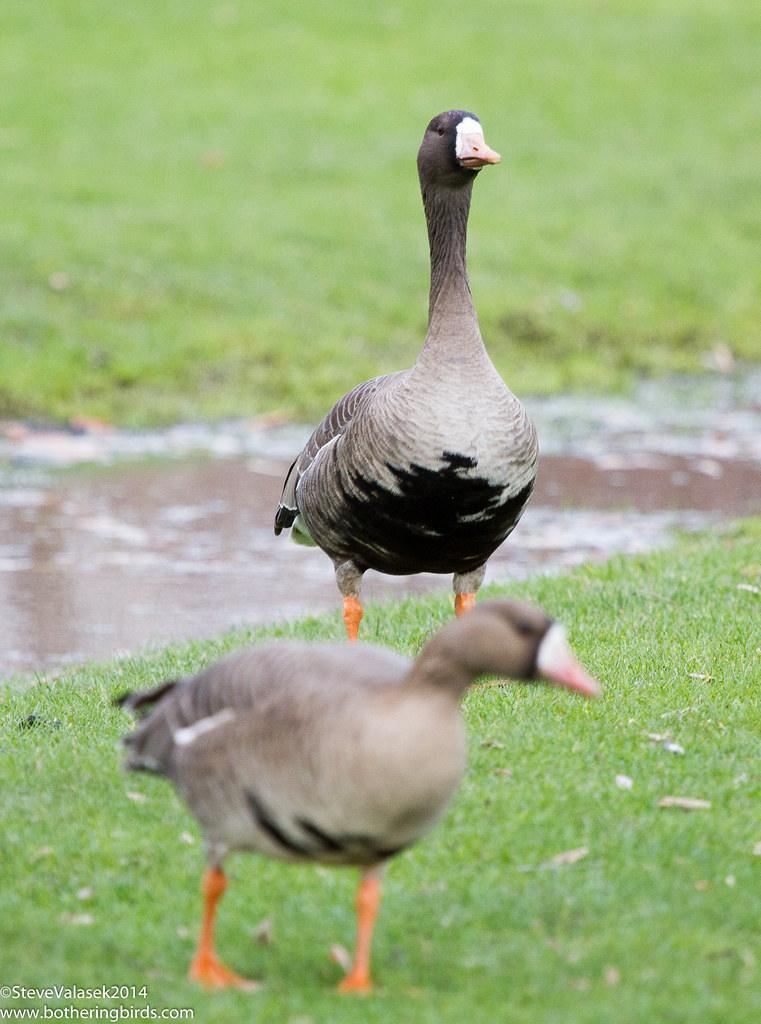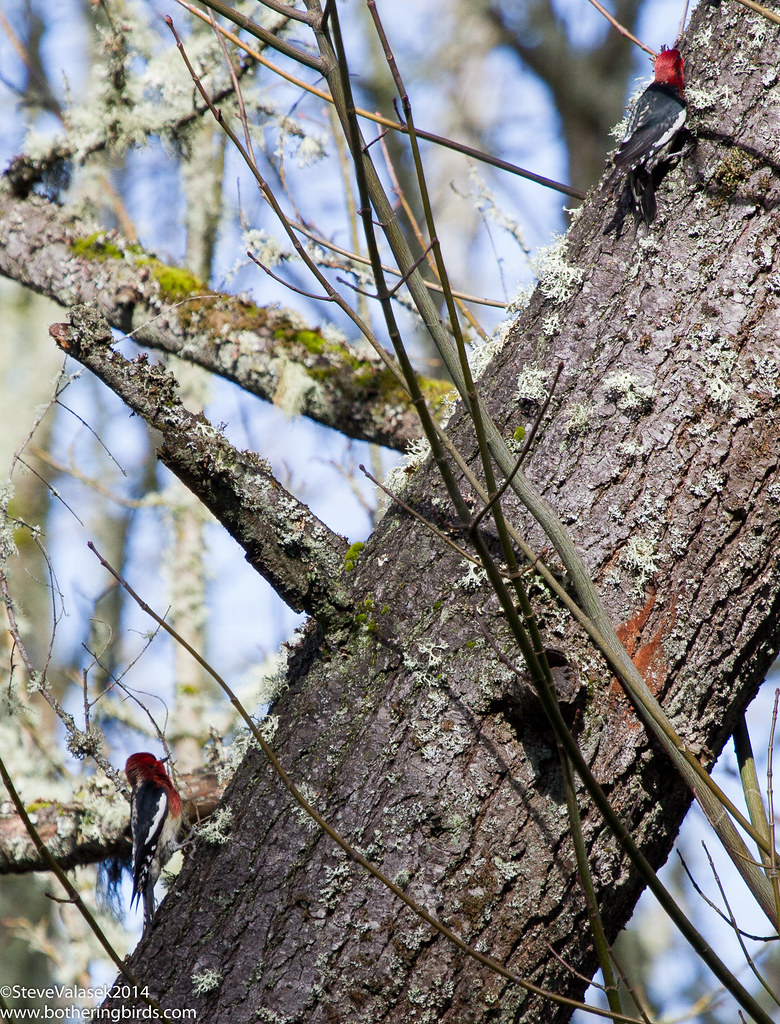We've been in Oregon for 2 weeks now, and we've seen the Sun twice. The first time gave us a beautiful rainbow while getting dinner while my parents were still here. Today was the second day, but let me come back to that.
One of the target birds that I would like to see while I'm here is a Eurasian Wigeon. There were ebird reports from a small park near our place. So after I dropped my daughter off at school on Thursday, my son and I headed over to check things out. The park is
Commonwealth Lake Park, and is part of the Tualatin Hills Parks and Recreation District (which is amazing, they also run Tualatin Hills Nature Park).
Here's the ebird hotspot information for it too. There's a nice little playground there which lets my kids play while I look at the birds. And despite there being more than a few Wigeons there, they all looked like American ones to me. And let me say that the number of bird species there is impressive, I think that I reported 30 species over 3 trips.
And it's nice when you get a lifer without looking for one. There were five sitting in some water between the playground and some swings.
 |
| Greater White-Fronted Geese - Commonwealth Lake Park |
They were near hundreds and hundreds of Cackling Geese, and this Red-Tailed Hawk was looking over everyone.
 |
| Red-Tailed Hawk - Commonwealth Lake Park |
There were lots of waterfowl on the lake, but I didn't really get anything good of them, but the usual Mallards and AMWI were accompanied by Ring-Necked Ducks, Buffleheads, American Coots and a Common Merganser. Great-Blue Heron and this Green Heron were also present.
 |
| Green Heron - Commonwealth Lake Park |
On 2 of the trips I saw Belted Kingfishers, the first trip the female the female was out, and the second trip it was a male.
 |
| Belted Kingfisher, Female - Commonwealth Lake Park |
My son enjoyed seeing this non-reportable Eagle make some passes over the area.
 |
| F-15 Eagle - Commonwealth Lake Park |
I ended up making 3 different trips there over 2 days. I took my daughter back after she was done with school, and then on Friday afternoon I met a local birder there for a tour. Still no Eurasian Wigeon, but we heard a Virginia Rail or 2 calling in an adjoining wetland and a River Otter was in the water too; but I didn't carry my camera beyond my first visit there. I do plan on making the park a common stop, I'm excited to see what migration brings.
This morning I got a chance to go back to the Tualatin Hills Nature Park for another visit, and the Sun decided to make a rare appearance too. I was hopping see some Pacific Wrens and maybe some other new birds. It would turn out that I didn't see much new area of the park, but got some nice birds for the day.
The area near the visitor's center was abuzz with activity, I saw my first Northern Flicker in Oregon calling way up in a tree. And some Spotted Towhees and a Bewick's Wren were making themselves known too. But it didn't take me long to start hearing, and then seeing, Pacific Wrens.
 |
| Winter Wren - Tualatin Hills Nature Park |
I was making my way to the lake when I heard, and then saw, my first Chestnut-Backed Chickadees, along with some Brown Creepers, but was too slow for photos. I arrived at the Big Pond, but it was fairly quiet. Mostly Mallard city with some Gadwalls and Green-Winged Teal for company.
 |
| Big Pond - Tualatin Hills Nature Park |
I left to try and see more of the park when I heard some drumming on a tree. I took off towards the sound, but ended up passing it up, because now it was coming behind me. I quickly triangulated where it was coming from, but didn't see anything. What I was hoping for was a Pileated Woodpecker, but instead I got a nice surprise. Three Red-Breasted Sapsuckers were chasing another and landing on trees. I managed to get a shot of 2 of them when they stopped for longer than 2 seconds.
 |
| Red-Breasted Sapsuckrs - Tualatin Hills Nature Park |
(thanks to the wonderful
Judy Liddell, correcting me that these were Red-Breasted Sapsuckers, and not Red-Naped, 4 lifers today!)
I made my way back towards the main path when I started seeing Pacific Wrens everywhere, singing their little hearts out.
 |
| Pacific Wren - Tualatin Hills Nature Park |
 |
| Pacific Wren - Tualatin Hills Nature Park |
As I finally made it to the main path, I saw a doe ahead of me. It really didn't seem to mind people and waited around long enough for a bunch of pre-school kids to get a nice look at it.
 |
| Mule Deer - Tualatin Hills Nature Park |
As I was contemplating on whether or not I had time to explore any more of the park before I had to head home, I happened to glance over my shoulder and see a bird on a tree.
Thirty odd years ago I was in the woods with my brother back in Pennsylvania. There was a small stand of trees on my Great-Grandparent's property and my brother and I would play in there any chance that we got. One of the days we heard an odd sound way up in a tree. We looked up and saw a great black bird working at tearing pieces of bark off of a tree. I can still clearly remember that bird up there and how huge it seemed to an 8-year old kid. I've been longing to see another one for the 3 years that I've been birding, and really for those last 30 years. Well, what do I see today, a Pileated Woodpecker once again.
 |
| Pileated Woodpecker - Tualatin Hills Nature Park |
 |
| Pileated Woodpecker - Tualatin Hills Nature Park |
This one bird made my entire day. I stood there for a few minutes watching it work some trees before it flew off and I lost sight of it. Hopefully it isn't another 30 years before I see another one.
Heading back towards home I somehow saw a little creature on the path. My daughter and I had seen a larger one last weekend, but this was maybe a third of the size. I managed to get her to touch the tail of that one, and I did too. This one I helped off of the busy path by picking it up and putting it into the leaf-litter in the direction it was going.
 |
| Rough-Skinned Newt - Tualatin Hills Nature Park |
Later I relayed the sighting to one of the park rangers behind the desk at the visitor's center. He told me that it was a
Rough-Skinned Newt and that they excrete a very potent neurotoxin on their skin. Not to touch them or handle them, and if you do, wash your hands and hope that you don't touch your eyes or have any openings to your skin.
And that adults have actually died from them, usually by ingesting them though. The only animal that seems to be tolerant to the toxin is the common Garter Snake, which readily eats them. But through a series of co-evolutionary steps the newts have become really, really toxic and the snakes really resistant to it.
Walking back through the woods, I was witness to a few more Pacific Wrens singing their songs, heralding spring and welcoming back some Sun.
 |
| Pacific Wren - Tualatin Hills Nature Park |
Thanks for making it this far,
Cheers.





















